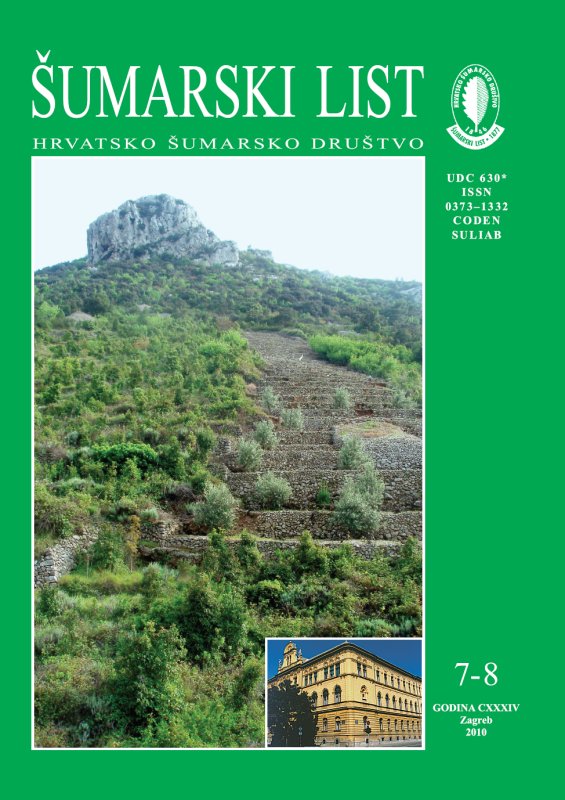| |
| RIJEČ GLAVNOGA UREDNIKA |
| |
|
|
| Branimir Prpić | |
| DO WE USE BIOMASS AS AN ENERGY SOURCE? IF SO, HOW DO WE USE IT?
pdf
HR
EN
|
333 |
| |
| IZVORNI ZNANSTVENI ČLANCI |
| |
|
|
| Degmečić, D., T. Florijančić, K. Krapinec, D. Domić | UDK 630* 156 (001) |
| Roe Deer Antlers as a Guideline for Managing the Local Population
pdf
HR
EN
|
335 |
| Barčić, D., V. Ivančić | UDK 630* 116 + 425 (001) |
| Impact of the Prudinec/Jakuševec Landfill on Environment Pollution
pdf
HR
EN
|
347 |
| Jakovljević, T., G. Pánczél, M. Manninger, N. Potočić, I. Seletković, T. Dubravac, M. Gradečki-Poštenjak | UDK 630* 160 (001) |
| Beech Leaves (Fagus Sylvatica L.), Reference Sample of ICPForests and itsApplicability in Determination of Total Nitrogen and Carbon in Leaves
pdf
HR
EN
|
361 |
| Ballian, D., M. Memišević, F. Bogunić, N. Bašić, M. Marković, D. Kajba | UDK 630* 164 (Quercus robur L.) (001) |
| Morphological Variability of Pedunculate Oak (Quercus robur L.) in the Region of Croatia and Western Balkans
pdf
HR
EN
|
371 |
| Mešić, A., T. Gotlin Čuljak, T.Miličević | UDK 630* 145.7 + 153 + 453 (001) |
| Population Dynamycs of Invasive Species Cameraria ohridella Deschka et Dimić (Lepidoptera: Gracilariidae) in Central Croatia
pdf
HR
EN
|
387 |
Summary: The paper deals with the biology of horse chestnut lefminer in central Croatia in three different towns within a circle of 150 km – Sisak, Zagreb and Čakovec. The data were collected by using pheromone traps and visual examinations of horse chestnut leves during the period of 2001–2008. Opposite to earlier assumptions, the horse chestnut leaf miner moth develops four and more seldom three generations annually in central Croatia. This is clearly presented in graphs 1–3, that show the horse chestnut male moth’s flight dynamics. The first generation moth’s flight starts in the last decade of April and lasts until the end of May; the second generation’s moths fly during June and the first two decades of July. Third generation of moths appear from the end of July until the end of August, and fourth generation from the middle to the end of September. During the eight years research, the fourth generation wasn’t recorded only in one year in two of three towns. Average duration of each developing period of horse chestnut leaf miner in Zagreb is presented in table 2. The second generation of horse chesnut monts is more numerous thent the first and the third one, while the fourth generation is even smaller. It was observed that the first generation’s females lay their eggs mainly on the upper sides of leaves of the lower third of the horse chestnut tree crown. Females of the second, third and fourth generation laid eggs on higher parts of the crowns, although their eggs can also be found on lower levels of the foliage.
Key words: duration of development stages; flight dynamics; horse chestnut |
| Vasić, V., Z. Galić, M. Drekić | UDK 630* 232.3 + 441 (001) |
| Efficiency and Selectivity of some Herbicides in Nursery Production of Poplar Seedlings
pdf
HR
EN
|
395 |
| Glavendekić, Milka | UDK 630* 442 (001) |
| Parasitoids and Hyperparasitoids of Erannis Defoliaria CL. (Lepidoptera, Geometridae) in Oak Forests
pdf
HR
EN
|
403 |



